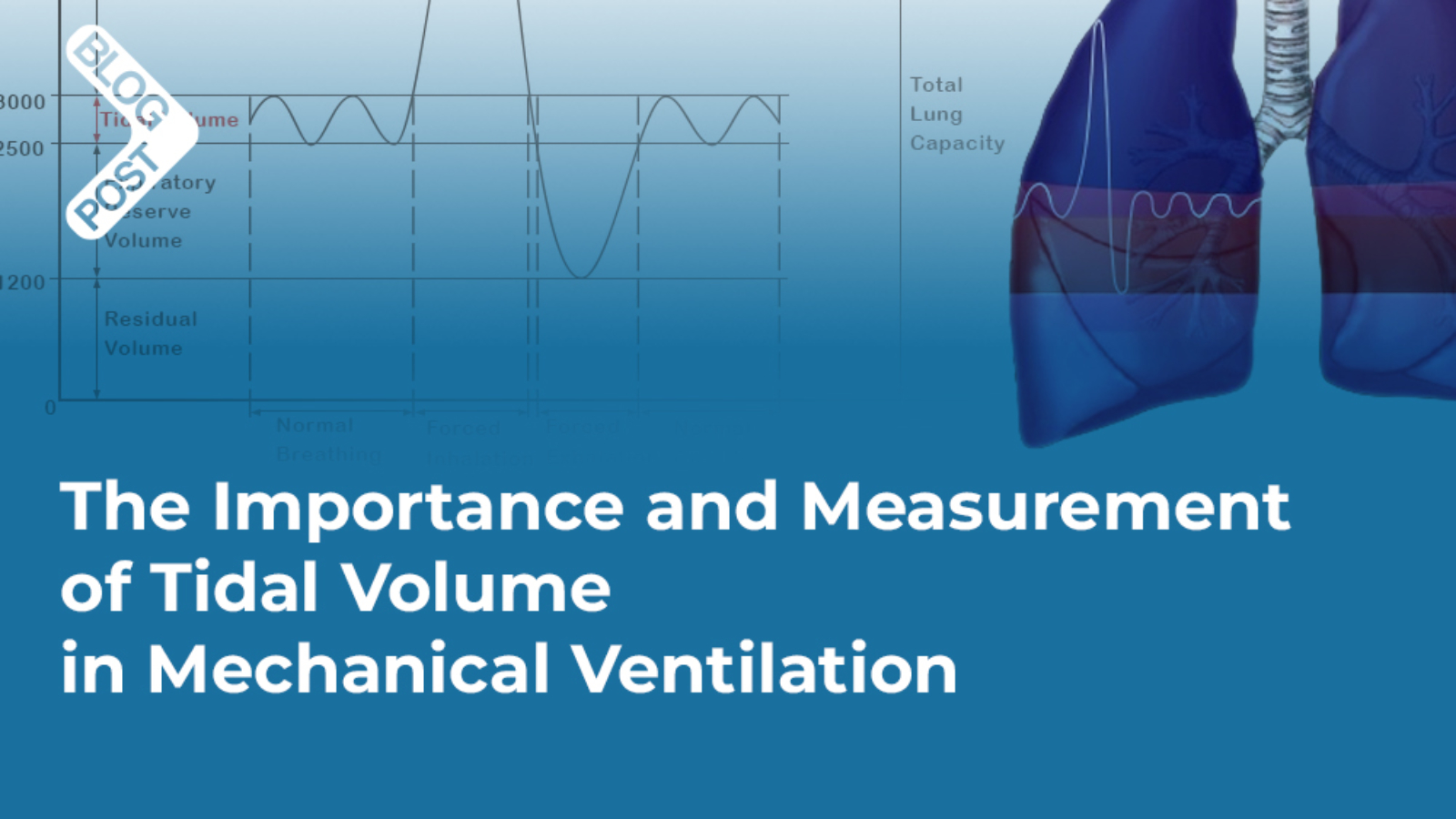Since the introduction of mechanical ventilation, there has been a great impact on medical treatment and the healthcare sector in general. Also, the modification in this medical device has yielded more positive results when it comes to patient outcomes. However, this incredible effect is carried out due to the regulation of certain factors like calculating tidal volume, maintaining plateau pressure, and lots more.
What Is Tidal Volume in Mechanical Ventilation?
Whenever it comes to the process of providing lung protective ventilation, the amount of tidal volume to be supplied by a ventilator plays a very important role. This tidal volume in Mechanical Ventilation (VT or TV) is always known as the total amount of air that enters and leaves the lung during each breathing period. The standard of this volume is said to be between the range of 400 ml to 500 ml for a healthy adult at rest. Continue reading, as this article provides you with some of the physiological and influential factors of tidal volume along with its limitations and future trends.

Importance of Tidal Volume in Respiratory Support
Tidal volume is one of the factors that must be properly regulated as it provides numerous benefits as follows:
- It regulates healthy breathing: With the help of a fixed tidal volume at the beginning of an aided breath, the amount of O2 inhaled and CO2 exhaled can be determined.
- It aids regular gaseous exchange: Many times, the amount of VT in assisted control ventilation helps most people with respiratory disorders to regulate their lung aeration.
- It enhances ventilation support: In most surgical settings, the calculation of tidal volume always serves as an indicator to prevent any possible breathing problems.

Physiological Basis of Tidal Volume
Obtaining the tidal volume in mechanical ventilation is one of the basic factors in determining an effective breathing system. It helps many surgeons and also serves as a guide for medical technicians during operations.
However, with the gradual contraction of the diaphragm and the expansion of the thoracic cage, the lung produces pressure which helps most technicians in calculating tidal volume. This abdominal pressure is a factor that also helps most doctors determine the breathing rate of an individual.
Sometimes, an individual tidal volume may vary due to certain factors like aging, medical disorders, stressful activities, and a lot more. Because of these factors, most healthcare providers often like to know their patients’ tidal volume by carrying out vital signs tests.

Factors Influencing Tidal Volume Requirements
Certain influential elements can make the tidal volume of an individual unstable (either high or low). Some of these factors are:
- Temperature: A temperature rise can occur at any level of O2 or CO2 partial pressure leading to an increase in the inhaled air.
- Hydrogen Potential (pH): Sometimes, there can be a decreased hydrogen ion that can cause an increase in breathing rate and tidal volume demand.
- Carbon dioxide partial pressure: Whenever there is a rise in the partial pressure of arterial carbon dioxide (PaCO2), there is always an increase in Tidal volume.
- Blood Pressure: For a patient having hypertension or hypotension there is either a rise or fall in the amount of inhaled or exhaled breath respectively.
Methods for Measuring Tidal Volume
Measuring and calculating tidal volume are some of the most important concepts needed to ensure proper respiratory flow. It comprises various methods that can be carried out quickly to obtain accurate information. Some of the techniques for taking VT value are:
- Spirometry: This is a common method employed by most experts to determine pulmonary function. It’s used to assess the capacity of the lungs and to particularly measure the quantity of air that can be inspired and expelled.
- Body plethysmography: This is a special kind of pulmonary function test that analyzes the volume of air that enters and exits your lung. It’s a safe technique that involves the use of a sensor to detect your VT following a deep breath.
Clinical Significance of Monitoring Tidal Volume
A regular spot check of tidal volume is of great significance. It allows a quick, accurate, and constant breathing assessment of the patient by the physician. In most cases, this monitoring process requires the use of the thoracic impedance technique to measure tidal volume in mechanical ventilation. Apart from knowing the actual TV value, this inspection strategy also helps to:
- Maintain a proper breathing system.
- Prevent lung overdistension (lobar emphysema)
- Modify ventilation settings
- Avoid respiratory problems or disorders
- Preserving pulmonary functions in an extremely sick patient.

Tidal Volume Target in Different Patient Populations
Ideally, the basic and standard quantity of tidal volume in a healthy young adult is known as 7 ml/kg of body mass at rest. However, due to a defect or abnormality in the respiratory system, this target value may vary in some patients.
For example, recent research on the population of people with acute lung disorders has demonstrated a reduced mortality rate with the use of a lower VT (4-8 ml/kg). Also, most children usually have a tidal value that is either higher or ranging around the normal adult value, and it is known to range from 8-10 ml/kg.
Adjusting Tidal Volume Based on Patient Condition
To adjust the tidal volume of a patient some clinical factors are to be considered and put in place. Negligence of any of these basics may lead to a more severe inspiratory problem or even death. Factors like respiratory tract resistance, pulmonary compliance, and general breathing conditions are to be predetermined. In most cases of VT adjustment, a consultation program with a respiratory specialist can be the best option.
Challenges and Limitations in Tidal Volume Management
Managing a specific tidal volume comes with a lot of difficulties and a restriction that have to be overcome. Some of the various properties or elements that can be encountered while managing a patient TV are:
- Possibility of breath insufficiently
- Potential overventilation problem
- High risk of volutrauma
- Change in patient requirements
- The positioning of a patient
- Pre-existing lung disease
- And sometimes, the level of anesthesia used.
Future Directions in Tidal Volume Management
Soon, certain features and advancements for controlling and calculating tidal volume more accurately are becoming a reality. However, some of the upcoming advancements for the control of tidal volume are:
- A portable device that detects tidal volume.
- Advance tracking method
- Improved method of respiratory protective ventilation.
- Artificial intelligence calculating tidal volume
- Safer ventilator settings
References
https://www.sciencedirect.com/topics/medicine-and-dentistry/tidal-volume#:~:text=
https://www.ncbi.nlm.nih.gov/books/NBK482502/#:~:text=
https://www.verywellhealth.com/tidal-volume-5090250#:~:text=
https://www.physio-pedia.com/Lung_Volumes
https://www.ncbi.nlm.nih.gov/books/NBK448186/
https://emedicine.medscape.com/article/304068-overview#:~:text=
https://bmcanesthesiol.biomedcentral.com/articles/10.1186/s12871-022-01676-8


Add a Comment